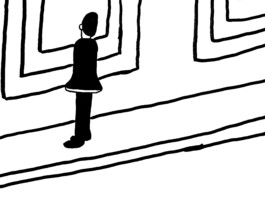
Photography is Fashion
19.4 – 1.6.2025
Works of
Memymom, Alexandre Furcolin Filho, Ali Ghorbani Moghaddam
Curated by
Steve Bisson
Orari
Sunday 4:30pm–7:30pm
Lab27 opens on Friday, April 18 at 9:00 PM with the exhibition “Photography is Fashion.” For the first time together, the works of the Belgian duo memymom, Alexandre Furcolin Filho, and Ali Ghorbani Moghaddam offer glimpses of reflection on fashion in a media landscape overcrowded with images, commodified bodies, and technological dictates.
The exhibition explores the connection between two distinctive and complementary phenomena of contemporary society: the rise of image production and the growing human need to be seen. Fashion does not merely respond to functional or social needs of the body; it is a vehicle of expression that shapes or influences identities, connecting them to a global visual discourse. Here, photography becomes the garment of the individual—a mirror and testimony of their being, in service of a self that is increasingly less secluded and more exposed.
Photography intertwines with fashion in a now exponential function. Just as photography overflows—reproducible, disposable, instantaneous, emotional, sometimes even useless—so does fashion, from the French façon, a way of doing rather than being, with its whimsical seasonality, its prêt-à-porter, its “fast” pace, even when destined for landfill. A vital appearance is what unites the need for fashion with its representational role: the illusion of presence, and in one’s own way. Fashion as the photogenic prophylaxis of the individual, but also as a manifestation of desires, dreams, and belief in beauty.
Fashion photography is a phenomenology of society, of its cultural substrata, and of irreducible subjective drives. The overproduction of images—fueled by the internet and social media—is radically transforming the way fashion is photographed, consumed, and interpreted, prompting a more critical reflection on the value of images and their transience in a world constantly “in transit.”
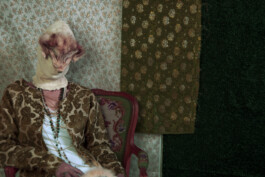
Since 2004, Marilène Coolens and Lisa De Boeck, a mother-daughter duo, have formed a prolific artistic partnership under the name Memymom. The project began in the 1990s within a domestic setting where “home” transforms into a theatrical stage open to interpretation.
Today, their dialogue expresses the full potential of a creative relationship built on visions, imaginaries, and values, but also on trust and mutual understanding. Lisa and Marilène are both photographer and model, set designers, stylists, and directors of this world, where new figures have started to appear as supporting characters. Memymom highlights the power of the relationships formed during the creative process. Each image becomes a meeting—also with the viewer. It is no longer merely a result, just as fashion is no longer just an outward appearance; it lives within the individual through other reflections and intimate truths. Fashion photography is not only a matter of aesthetics and construction. Its power also lies in the relationships that intertwine between the photographer and the subject.
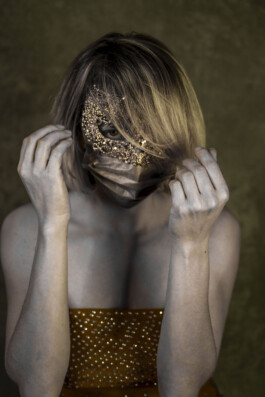
Alexandre Furcolin Filho, a Brazilian artist and fashion photographer, combines the conventional expectations of the industry with a more realistic, vernacular, and even documentary style. This approach serves as a way to counter the commercial drift of retouched, saturated, digital, and mass-produced images. His work calls for a return to spontaneity in fashion, seen in the casual pairing of colors or the reflections of everyday life, encouraging an exploration of behaviors, identities, and deeper meanings. The poses, gazes, and settings act as questions about what lies beneath the surface of the visible. Fashion photography also has the power to evoke strong empathy with the subjects, highlighting aspects of their personality or emotions, making them more human, familiar, and relatable to the viewer—far removed from the abstractions of the runway. When subjects are portrayed in more authentic environments or in situations that reflect everyday life, fashion photography becomes a mirror of our time and experiences, offering us a sense of belonging and a more enduring understanding of the world around us.
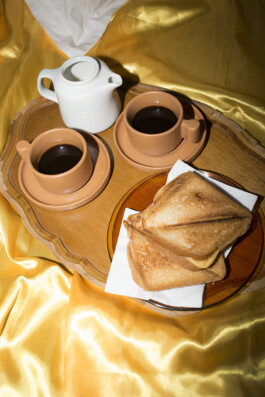
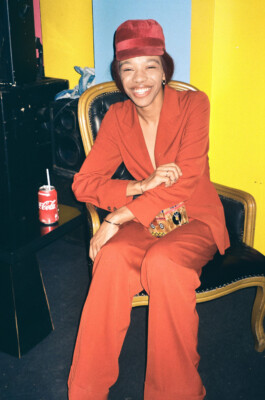
Ali Ghorbani Moghaddam, a Persian educator, fashion, and art photographer, challenges traditional standards of beauty, aesthetic norms, and luxury expectations, seeking provocative, non-conformist representations. He visually interrogates the technological relationship between photography and fashion, experimenting with a diverse range of analog and digital incursions and contaminations. By moving away from perfection, he embraces error, fracture, and glitch—the “photoshopped” nature of what we perceive, the artificial that appears organic, and the chaotic multiplicity of meanings. With irreverence, he exposes the traits of contemporary iconographic neurosis and shifts the focus back to the image as a construction, and to fashion as both a possibility and a mystery. Reality is not something static or simply a convention; rather, it is an invitation to marvel. In this way, fashion photography goes beyond presenting a pre-defined reality—it becomes an ongoing reflection on the creation process and its relationship with the viewer, urging us to rethink how we see, represent, and interpret images.
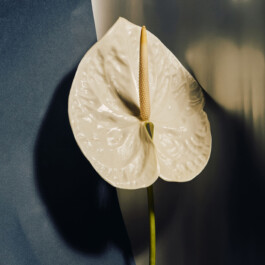
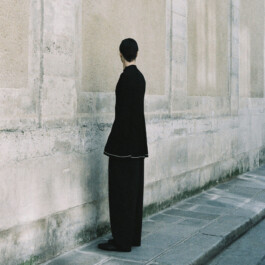
exhibition views
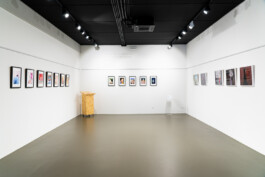
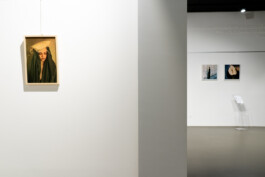
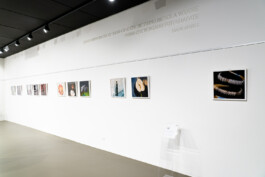
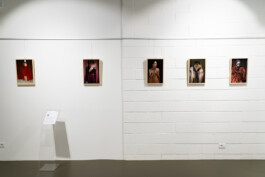
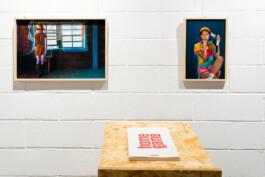
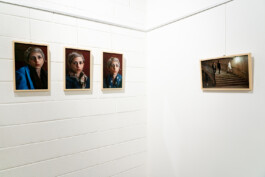
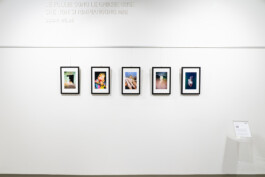
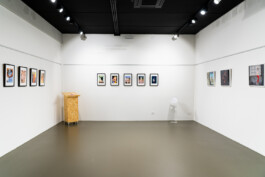
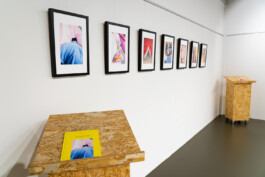
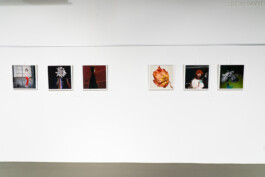
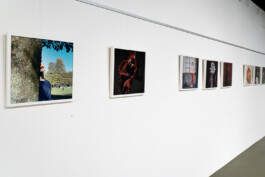

Photography is Fashion
19.4 – 1.6.2025
Works of
Memymom, Alexandre Furcolin Filho, Ali Ghorbani Moghaddam
Curated by
Steve Bisson
Orari
Sunday 4:30pm–7:30pm
Lab27 opens on Friday, April 18 at 9:00 PM with the exhibition “Photography is Fashion.” For the first time together, the works of the Belgian duo memymom, Alexandre Furcolin Filho, and Ali Ghorbani Moghaddam offer glimpses of reflection on fashion in a media landscape overcrowded with images, commodified bodies, and technological dictates.
The exhibition explores the connection between two distinctive and complementary phenomena of contemporary society: the rise of image production and the growing human need to be seen. Fashion does not merely respond to functional or social needs of the body; it is a vehicle of expression that shapes or influences identities, connecting them to a global visual discourse. Here, photography becomes the garment of the individual—a mirror and testimony of their being, in service of a self that is increasingly less secluded and more exposed.
Photography intertwines with fashion in a now exponential function. Just as photography overflows—reproducible, disposable, instantaneous, emotional, sometimes even useless—so does fashion, from the French façon, a way of doing rather than being, with its whimsical seasonality, its prêt-à-porter, its “fast” pace, even when destined for landfill. A vital appearance is what unites the need for fashion with its representational role: the illusion of presence, and in one’s own way. Fashion as the photogenic prophylaxis of the individual, but also as a manifestation of desires, dreams, and belief in beauty.
Fashion photography is a phenomenology of society, of its cultural substrata, and of irreducible subjective drives. The overproduction of images—fueled by the internet and social media—is radically transforming the way fashion is photographed, consumed, and interpreted, prompting a more critical reflection on the value of images and their transience in a world constantly “in transit.”

Since 2004, Marilène Coolens and Lisa De Boeck, a mother-daughter duo, have formed a prolific artistic partnership under the name Memymom. The project began in the 1990s within a domestic setting where “home” transforms into a theatrical stage open to interpretation.
Today, their dialogue expresses the full potential of a creative relationship built on visions, imaginaries, and values, but also on trust and mutual understanding. Lisa and Marilène are both photographer and model, set designers, stylists, and directors of this world, where new figures have started to appear as supporting characters. Memymom highlights the power of the relationships formed during the creative process. Each image becomes a meeting—also with the viewer. It is no longer merely a result, just as fashion is no longer just an outward appearance; it lives within the individual through other reflections and intimate truths. Fashion photography is not only a matter of aesthetics and construction. Its power also lies in the relationships that intertwine between the photographer and the subject.

Alexandre Furcolin Filho, a Brazilian artist and fashion photographer, combines the conventional expectations of the industry with a more realistic, vernacular, and even documentary style. This approach serves as a way to counter the commercial drift of retouched, saturated, digital, and mass-produced images. His work calls for a return to spontaneity in fashion, seen in the casual pairing of colors or the reflections of everyday life, encouraging an exploration of behaviors, identities, and deeper meanings. The poses, gazes, and settings act as questions about what lies beneath the surface of the visible. Fashion photography also has the power to evoke strong empathy with the subjects, highlighting aspects of their personality or emotions, making them more human, familiar, and relatable to the viewer—far removed from the abstractions of the runway. When subjects are portrayed in more authentic environments or in situations that reflect everyday life, fashion photography becomes a mirror of our time and experiences, offering us a sense of belonging and a more enduring understanding of the world around us.


Ali Ghorbani Moghaddam, a Persian educator, fashion, and art photographer, challenges traditional standards of beauty, aesthetic norms, and luxury expectations, seeking provocative, non-conformist representations. He visually interrogates the technological relationship between photography and fashion, experimenting with a diverse range of analog and digital incursions and contaminations. By moving away from perfection, he embraces error, fracture, and glitch—the “photoshopped” nature of what we perceive, the artificial that appears organic, and the chaotic multiplicity of meanings. With irreverence, he exposes the traits of contemporary iconographic neurosis and shifts the focus back to the image as a construction, and to fashion as both a possibility and a mystery. Reality is not something static or simply a convention; rather, it is an invitation to marvel. In this way, fashion photography goes beyond presenting a pre-defined reality—it becomes an ongoing reflection on the creation process and its relationship with the viewer, urging us to rethink how we see, represent, and interpret images.


exhibition views










